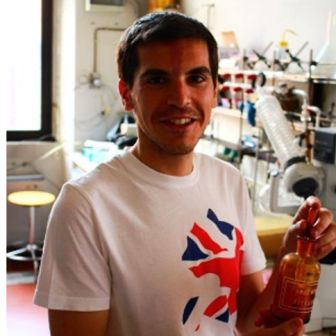Development of Photocatalytic Processes for Air Pollution Remediation and Fuels Production
A special issue of Catalysts (ISSN 2073-4344). This special issue belongs to the section "Photocatalysis".
Deadline for manuscript submissions: closed (30 September 2018) | Viewed by 13075
Special Issue Editors
Interests: nanostructured materials; heterogeneous catalysts; sustainable processes; mesoporous materials; green applications
Special Issues, Collections and Topics in MDPI journals
Interests: photocatalysis; nanomaterials formulation; sustainable processes; air quality remediation; solar fuels production
Special Issue Information
Dear Colleagues,
In addressing the most pressing issues of the 21st century, namely environmental pollution remediation and alternative fuel production, photocatalysis represents a powerful technology to exploit light radiation to obtain strategic products for the economies of today and tomorrow. There is a wide range of possible approaches that can be pursued, either organic or inorganic pollutant oxidation for air quality remediation or solar fuel production from waste biomass or CO2-rich flue gases. Within heterogeneous photocatalysis, the most promising, yet challenging, strategy is to design materials for specific processes, the possible great potential has not yet been achieved yet.
The aim of this Special Issue is to provide insight on cutting edge photocatalytic technologies, focusing on the most important on innovative solutions for efficient photocatalytic pollutant abatement and fuel production. Photocatalysts, the key component of this technology, and process design need to be designed according to each reaction’s specific needs, finding the best way to solve them.
Assoc. Prof. Dr. Michela SignorettoDr. Alberto Olivo
Guest Editors
Manuscript Submission Information
Manuscripts should be submitted online at www.mdpi.com by registering and logging in to this website. Once you are registered, click here to go to the submission form. Manuscripts can be submitted until the deadline. All submissions that pass pre-check are peer-reviewed. Accepted papers will be published continuously in the journal (as soon as accepted) and will be listed together on the special issue website. Research articles, review articles as well as short communications are invited. For planned papers, a title and short abstract (about 100 words) can be sent to the Editorial Office for announcement on this website.
Submitted manuscripts should not have been published previously, nor be under consideration for publication elsewhere (except conference proceedings papers). All manuscripts are thoroughly refereed through a single-blind peer-review process. A guide for authors and other relevant information for submission of manuscripts is available on the Instructions for Authors page. Catalysts is an international peer-reviewed open access monthly journal published by MDPI.
Please visit the Instructions for Authors page before submitting a manuscript. The Article Processing Charge (APC) for publication in this open access journal is 2700 CHF (Swiss Francs). Submitted papers should be well formatted and use good English. Authors may use MDPI's English editing service prior to publication or during author revisions.
Keywords
- Photocatalysis
- Environmental remediation
- Gas phase reactions
- Solar fuels
- Catalyst formulation
- Photocatalytic process design
- Liquid phase reactions
- NOx removal
- VOCs abatement






